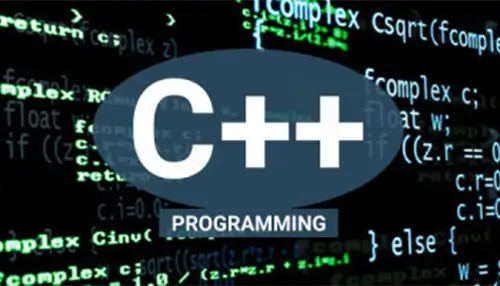QR codes and barcodes have become ubiquitous these days, offering a seamless way to share information, track inventory, and facilitate transactions. With the powerful capabilities of OpenCV, developers can integrate efficient QR code and barcode detection into their applications. In this blog, we will delve into how you can leverage OpenCV for QR code and barcode detection, and how OdiTek, an OpenCV development company, can assist you in your projects.
Introduction to OpenCV
OpenCV (Open-Source Computer Vision Library) is an open-source computer vision and machine learning software library. It includes more than 2500 optimized algorithms for image processing, machine learning, and computer vision. OpenCV is widely used in applications such as facial recognition, object detection, and image segmentation.
What are QR Codes and Barcodes?
QR Codes (Quick Response Codes): QR codes are two-dimensional barcodes that store information in a matrix of black and white squares. They can hold various types of data such as URLs, text, and other information that can be read by QR code scanners or smartphones.
Barcodes: Barcodes are one-dimensional representations of data, typically a series of parallel lines of varying widths and spacings that encode information such as product numbers and prices. They are used extensively in retail, logistics, and inventory management.
The Importance of QR Code and Barcode Detection
QR code and barcode detection are essential in many industries. Here are some key benefits:
i. Efficiency: Automating the detection process saves time and reduces human error.
ii. Accuracy: Reliable detection ensures accurate data capture.
iii.Convenience: QR codes and barcodes provide a quick way to access and share information.
iv. Cost-Effectiveness: Reducing the need for manual data entry lowers operational costs.
How OpenCV Facilitates QR Code and Barcode Detection
OpenCV provides powerful tools for image processing and computer vision tasks, making it an ideal choice for QR code and barcode detection.
Here’s how OpenCV can help:
i. Image Processing: OpenCV offers a variety of functions to process images, such as filtering, edge detection, and thresholding, which are essential for preparing images for QR code and barcode detection.
ii. Pattern Recognition: OpenCV’s pattern recognition algorithms can identify and decode QR codes and barcodes from images, even in challenging conditions such as low light or distorted images.
iii. Real-Time Detection: OpenCV’s optimized algorithms allow for real-time detection, making it suitable for applications that require instant feedback.
Implementing QR Code Detection with OpenCV
Implementing QR code detection involves several steps, including image acquisition, preprocessing, and decoding. Here’s a theoretical overview:
i. Image Acquisition: Capture the image using a camera or load it from a file.
ii. Preprocessing: Enhance the image to make the QR code more discernible. This may include converting the image to grayscale, applying filters, and detecting edges.
iii. Detection: Use OpenCV’s functions to locate the QR code in the image. This involves finding the distinctive patterns of QR codes.
iv. Decoding: Once the QR code is detected, it can be decoded to extract the encoded information.
Implementing Barcode Detection with OpenCV
The process for barcode detection is similar to that of QR code detection, with a focus on identifying the linear patterns of barcodes:
i. Image Acquisition: Capture or load the image containing the barcode.
ii. Preprocessing: Prepare the image by enhancing contrast and reducing noise.
iii. Detection: Identify the barcode region using edge detection and other image processing techniques.
iv. Decoding: Decode the barcode to retrieve the encoded data.
Applications of QR Code and Barcode Detection
QR code and barcode detection have a wide range of applications across various industries:
i. Retail: Streamlining the checkout process by scanning barcodes for pricing and inventory management.
ii. Logistics: Tracking packages and shipments using barcodes and QR codes for efficient logistics management.
iii. Marketing: Using QR codes in marketing materials to provide additional information and engage customers.
iv. Healthcare: Managing patient records and medication tracking with barcodes and QR codes.
How OdiTek Can Help
As a leading OpenCV development company, OdiTek specializes in creating custom solutions for QR code and barcode detection. Here’s how OdiTek can assist:
i. Expertise: Our team has extensive experience in OpenCV development, ensuring efficient and effective implementation of QR code and barcode detection.
ii. Customization: We tailor our solutions to meet your specific needs, whether you require real-time detection or integration with existing systems.
iii. Support: OdiTek offers comprehensive support throughout the development process, from initial consultation to post-deployment maintenance.
Conclusion
QR code and barcode detection are crucial technologies in today’s digital landscape, offering numerous benefits in efficiency, accuracy, and convenience. OpenCV provides powerful tools to implement these technologies effectively. By partnering with OdiTek, you can leverage our expertise in OpenCV development to create robust and reliable detection solutions tailored to your needs.
Whether you’re in retail, logistics, healthcare, or marketing, integrating QR code and barcode detection into your applications can streamline operations and enhance user experience. Contact OdiTek today to learn more about how we can help you achieve your goals with OpenCV.







